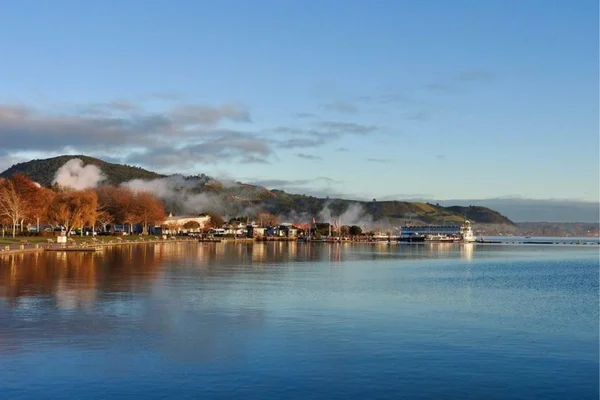Major Magnetic Anomaly was discovered deep below Lake Rotorua, revealing groundbreaking geological insights.
About lake Rotorua:
- Situated within the crater of a massive ancient volcano on New Zealand’s North Island, Lake Rotorua boasts a unique geological setting.
- The Rotorua area is renowned for its hydrothermal activity, with clouds of steam drifting around the lake’s shore.
- Sulfur imparts a “magical green-blue” color to the water, creating a distinctive feature in the region.
New Revelations:
- Detailed Floor Maps: GNS Science mapped 68% of the lake’s floor, covering 21 square miles with unprecedented detail.
- Ancient River and Eruption Craters: Maps unveiled the presence of an ancient river and eruption craters, adding layers to the lake’s geological history.
- Magnetic Anomaly: A significant magnetic anomaly in the lake’s southern part was discovered, marking a groundbreaking revelation.
Magnetic Anomaly Interpretation
- Hydrothermal Influence: Volcanic rocks usually contain the highly magnetic mineral magnetite.
- However, in Lake Rotorua, researchers propose that hydrothermal fluids passing through the rocks have transformed magnetite into pyrite (fool’s gold), which has almost no magnetic signal.
- This hydrothermal process significantly reduces the magnetic signal, providing an explanation for the observed negative anomaly.
- Unique Geological Signature: Unlike typical volcanic rocks that exhibit positive anomalies when analyzed with a magnetometer, the rocks in this case show negative anomalies, likely due to their very low magnetic susceptibilities.
Evidence of Hydrothermal Activity
- Heat Flow Map: Highlights rising heat, likely hot water, from beneath the lake floor in the area of the magnetic anomaly.
- Eruption Craters: Visible craters in the same region suggest hydrothermal eruption craters, further confirming active geological processes.
Temperature Dynamics
- Cool Lake Depths: Despite hydrothermal activity, lake temperatures near the bottom remain around 57°F (14°C).
- The vast size of the lake allows cool water to counteract heat from below, maintaining a consistent temperature.
| UPSC IAS Preparation Resources | |
| Current Affairs Analysis | Topperspedia |
| GS Shots | Simply Explained |
| Daily Flash Cards | Daily Quiz |



